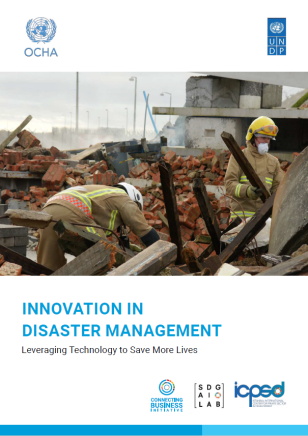Innovation in Disaster Management: Leveraging Technology to Save More Lives

Innovation in Disaster Management: Leveraging Technology to Save More Lives
March 14, 2024
Technological advances can help reduce the global death toll following extreme weather events, despite the increase in frequency and magnitude of such events and population growth. For this reason, the Connecting Business initiative (CBi), a programme supported by the United Nations Office for the Coordination of Humanitarian Affairs (OCHA) and the United Nations Development Programme (UNDP), partnered with the UNDP Istanbul International Center for Private Sector in Development (ICPSD) SDG AI Lab to better understand the role of technology in disaster management and the role of the private sector in spearheading the broader adoption of innovations that can save lives and livelihoods.
This report aims to introduce and raise awareness about key technologies for disaster management, illustrate how they are most commonly used and outline the main challenges and key considerations associated with them. The hope is that this will fuel advocacy around the use of technology to foster resilience. Extensive study, expert advice and real-world implementation have shown these technologies to be essential facilitators of catastrophe resilience that reduce casualties, preserve livelihoods and improve catastrophe preparedness, response and recovery.
The report contains examples from CBi Member Networks in Mexico, the Philippines and Vanuatu that showcase the power of business when its resources are used to improve disaster preparedness, response and recovery through a collaborative framework.
The report and its findings inspired the development of the Frontier Technology Radar for Disaster Risk Reduction (FTR4DRR). The radar systematically tracks frontier technologies as they are developed and categorizes these solutions by technology type, disaster/crisis type and maturity.
While there is still much to be done in the field of technology for disaster management, we hope this report will inspire and guide humanitarian and development practitioners to better understand the potential of partnering with the private sector—not only as a source of funding but also as a source of innovation and impact.

 Locations
Locations




